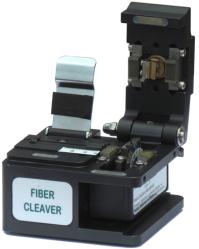-

- Sopto Home
-

- Special Topic
-

- Fiber Optics knowledge
-

- How to Repair a Cut Underground Fiber Optic Cable?
Fiber Optics knowledge
- Maintained Methods of Fusion Splicer Parts
- How to Use the Fiber Optic Cleaver?
- What are Fixed Attenuators & Variable Attenuators?
- Deployable Fiber Optic Systems for Harsh Mining Environments
- Developing Miniature Fiber Optic Cable Has Become the Trend
- Fiber Optic Cleaning Procedures
- 6 Steps to Selecting a Fiber Optic Cable
- Signal Attenuation Introduction
- How Fiber Transmission Works?
SOPTO Special Topic
Certificate



Guarantee
Except products belongs to Bargain Shop section, all products are warranted by SOPTO only to purchasers for resale or for use in business or original equipment manufacturer, against defects in workmanship or materials under normal use (consumables, normal tear and wear excluded) for one year after date of purchase from SOPTO, unless otherwise stated...
Return Policies
Defective products will be accepted for exchange, at our discretion, within 14 days from receipt. Buyer might be requested to return the defective products to SOPTO for verification or authorized service location, as SOPTO designated, shipping costs prepaid. .....
Applications
Fiber Optis can be used in so many fields:
Data Storage Equipment
Interconnects,Networking
Gigabit Ethernet
FTTx, HDTV,CATV
Aerospace & Avionics
Data Transfer Tests
Network Equipment
Broadcast Automotive
Electronics,Sensing
Oil & Gas, Imaging
Outside Plant,Central Office
Harsh Environment
Data Transmission
Illumination,Institutions
Ship to Shore,Education
Simulation,Military,Space
Unmanned Aerial Vehicles
Semiconductor Equipment
Diagnostics & Troubleshooting
Premise Networks Carrier Networks
Independent Telecommunication Providers
SOPTO Products
- Fiber Optic Transceiver Module
- High Speed Cable
- Fiber Optical Cable
- Fiber Optical Patch Cords
- Splitter CWDM DWDM
- PON Solution
- FTTH Box ODF Closure
- PCI-E Network Card
- Network Cables
- Fiber Optical Adapter
- Fiber Optical Attenuator
- Fiber Media Converter
- PDH Multiplexers
- Protocol Converter
- Digital Video Multiplexer
- Fiber Optical Tools
- Compatible
Performance Feature
Fiber Optics knowledge
Recommended


How to Repair a Cut Underground Fiber Optic Cable?
The underground fiber optical cable can be accidentally cut. The most common factor which can cause this accident is the use of backhoe while digging. If it happens to you, you can simply look for backhoe and get the cut cable. However, if it is caused by moles, it will be difficult for you to troubleshoot it. You will need some equipment to involve. Now, there are some simple tips to repair a cut underground fiber optic cable.
The first thing you have to do is to look for the break in your cable. Usually, the optical fiber technicians use the equipment is called optical time domain reflectometer or OTDR. It can work like redar which sends a light pulse down to the cable. It will be reflected back to your device when it encounters break. It helps to the technician know the location of the break.
After knowing the location of the break, you should dig up the cable with the break. Then, strip the fiber around 9 feet of the cable using cable rip cord. Peel the jacket gently so that the fiber optic tubes exposed and eliminate the excess jacket. Then, clean that cable gel using cable gel remover and cut any sheath and yarn. Separate the tubes of the fiber. Avoid damaging the strength member since it is required to hold the cable in splice enclosure.
Next, you need to do is 2 inches by using the fiber cladding on fiber coated with mold release tools and cleaning in the tube. Trim any damage on the fiber ends using high precision fiber cleaver. If you want to perform a fusion splice, you need to place a fusion splice protector to the fiber. From now on, you must be cleaned, use lint-free stripe fiber wipes it is soaked in alcohol. In addition, if you want to create a mechanical connection, you must connect fast fiber optic connector to fiber and fiber with alcohol and a lint-free after cleaning wipe. Make sure that the fiber does not touch anything.
Then, if you make a fusion splice, you need to put the fibers which will be spliced in the fusion splicer. Then, fire the fusion splicer based on the manual. After that, you need to move the fusion connector into a heat shrink oven. Press a button to heat shrink. In some cases, the fusion splice is better than mechanical splice since the signal loss is under 0.1 decibels (dB). On the other hand, the mechanical splice has signal loss under 0.5dB. The last thing is to see the connection of fiber-optic with the OTDR. Then put back those splices into the splice enclosure. Close the enclosure and then rebury the cable.
For more info, please browse our website.





-180x180.JPG)

